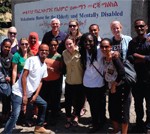When to Refer a Patient
Consider a physical therapist for your patients if they display any of the following: difficulty adapting to a new disability; significant impairments in range of motion or strength; significant balance or gait disturbance; decreased safety awareness; a history of falls; or a need for assistive device training, wheelchair adaptation or positioning, or training in mobility or transfers such as bed mobility, sit to stand, prolonged standing, ambulating, and ascending/descending stairs. Let us not underestimate the importance of prevention of the above impairments.
Physical therapists can help prevent a health condition in susceptible populations or individuals through risk identification. If you suspect a patient’s disease process may lead him or her down the path of limited activity or restricted participation in daily activities, the preventive aspect of PT is critical. Also, if you suspect or it is revealed through selected outcome measures that a patient presents with high fear and avoidance of activity, feelings of disablement, or a decrease in quality of life and functional mobility, they will likely benefit from a PT evaluation.
Presently, only Indiana, Michigan, and Oklahoma do not allow patients direct access to PT.1 However, direct access is still complicated because very few third-party payers will reimburse without a physician’s referral. Therefore, the majority of physical therapists are reliant on physician referrals.
PT Specialties
The PT profession and curriculum has grown immensely and, because of the breadth of knowledge and skills involved in treating diverse populations in multiple settings, most PTs choose an area of practice that allows them to focus their expertise. Physical therapists will commonly have additional credentials after their name. Currently, physical therapists may be a certified specialist in cardiovascular and pulmonary, clinical electrophysiology, geriatrics, neurology, orthopaedics, pediatrics, sports PT, and women’s health. Continuing education is also a large part of a physical therapist’s practice, but, again, this is dependent on the therapist’s clinical expertise and interest.
If you are looking for a therapist with specific continuing education on arthritis and rheumatologic management, you can browse the ACR’s membership directory at www.rheumatology.org/directory to look up physical therapists in your area. This will identify therapists with a special interest in rheumatology. I would also recommend visiting clinic websites or calling clinics directly. A clinic website will likely promote therapists who are specialized in rheumatology or other specific areas. A quick phone discussion will also provide insight as to the patient population treated and the clinic operations. Ask questions such as: What is the one-on-one PT-to-patient treatment time? How many patients with rheumatic conditions are typically treated at your clinic? Do patient outcomes seem to vary when a rheumatology patient is treated by a PT specialist versus a general physical therapist?

